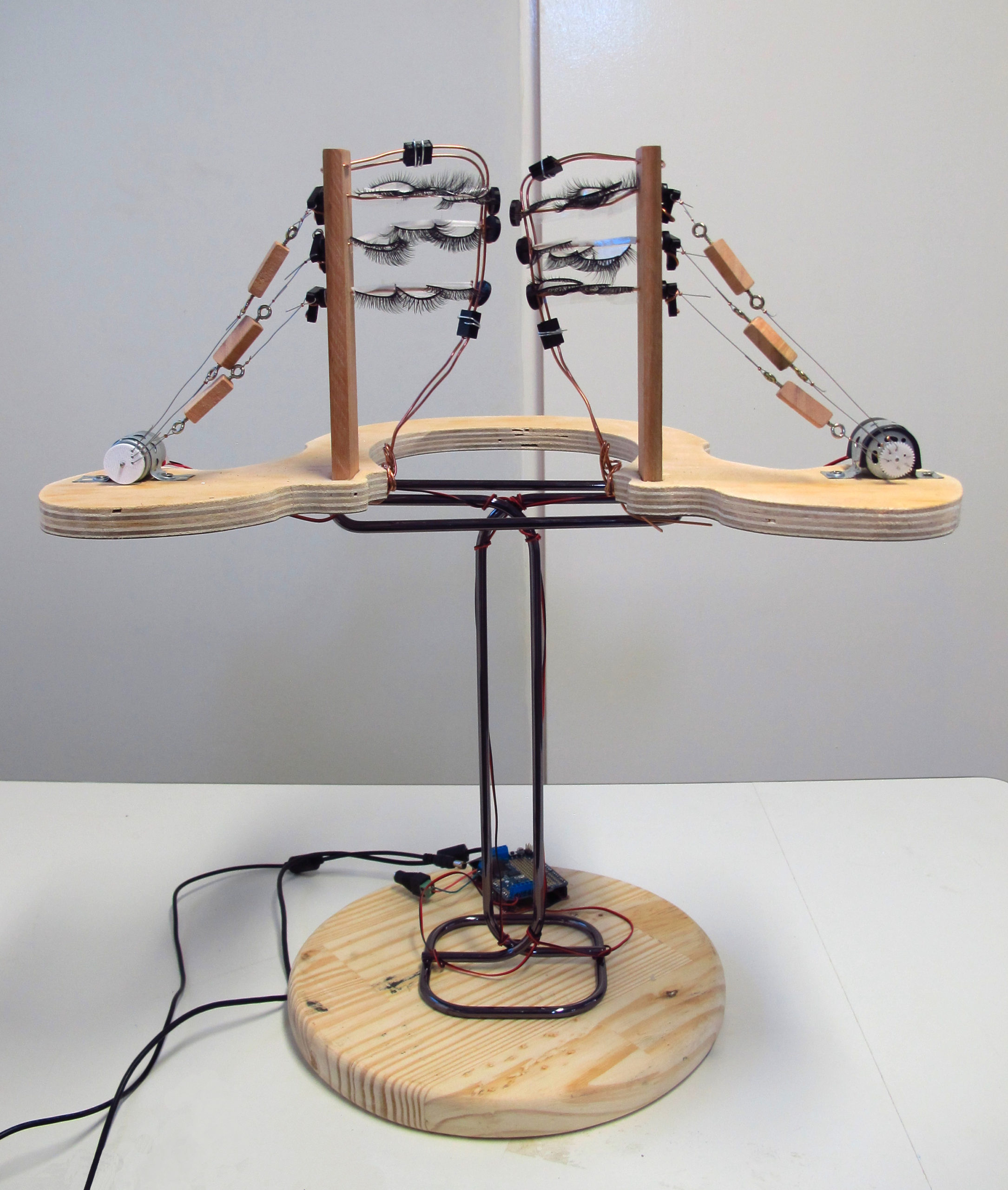Project Description
Portfolio | Interstitial Castings
Relational Objects Project
The sculptures in the Relational Object Project engage the qualia of gestural interaction. They appropriate and re-invest Lygia Clark’s strategy of material and sensory juxtaposition. They begin with quotidian sensations, like the feeling of eyelashes brushing one’s skin but use embedded electronics to create sensory juxtapositions. These objects amplify the paradoxical nature of gestural communication and simultaneously focus attention on the embodied aspects of its interactions.
In the Relational Object Project I appropriate Clark’s strategies of gestural engagement and juxtaposition in conjunction with physical computing. I use embedded electronics and algorithms as materials in relational sculptures that explore ‘techno-qualia,’ a new repertoire of senses created by our experiences with technologies that let us dwell in the material world while simultaneously experiencing a more abstract conceptual space. By focusing and intensifying embodied sensations I suggest new relational encounters and create new sensations. These sculptures produce focused sensory experiences that trigger cross-scale interactions between rhythmic, haptic, and reflexive ways of knowing.
The viewer’s participation is actively invoked by sensory attunement and the attendant association of personal embodied memory. By provoking new associations, the sculptures arouse the possible mutability of the viewers narrative consciousness.These sculptures amplify epiphenomena of the viewers’ body. Sensors and those algorithms which interpret their data allow for a sustained immersion in the embodied experience of intimate communication. The viewer need not maintain conscious or directed focus on the sensory. Instead, they are able to remain immersed in sensation, cycling through embodied engagements, visceral interactions, and memories of intimate encounters.
The use of computing as material then attempts to open the viewer to novel variations in sensory language, prompting them to devise new engagements with its syntax. Embedded electronics and algorithms then enable dynamic interactions with viewers. A critical aspect of this work is the possibility of expediting an embodied response to stimuli that is usually passively processed. Through amplification and sustained interaction these sculptures experiment with a collaborative process of play and exploration which facilitates ways of knowing that are beyond logic. They call on our embodied knowledge and temporal sensibilities in a new process which builds on the suggestion in Clark’s work that relational objects can be transformative and therapeutic. Like Clark’s Structuring the Self process they activate sensory experience to loosen a productive potential, an opening of oneself into other possible worlds.
The Relational Objects Project is, foremost, a body of sculptures to reimagine a breadth of possible worlds. These sculptures use technology and sensory engagement as their materials. This project lead to further questions: What worlds become possible if we take seriously these strategies of sensory engagement as guides when building with new technologies? What types of sensations might I and others discover, as sculptors, by thinking of algorithms and computational hardware as both material and relational? What possible worlds might we discover and proliferate if we invent new forms – new sensations to structure the self – that challenge the popular inevitability of techno-deterministic dystopia?


2019
Carnaval Eyelashes, Wood, Metal,PLA, Motors, Microcontroller
22 x 19.5 x 13 inches
Beijos de Borboleta, the first sculpture in the series, is a machine that can kiss. Reimaging the intimacy of the butterfly kiss as a technological encounter, it amplifies and intensifies the intimate gesture of brushing one’s eyelashes against anther’s skin. Its scale references table top vanity mirrors and its wooden platform references the shape of eyelash curler handles. The viewer is invited to put their face up to the flitting eyelashes to receive the sensation of several butterfly kisses at once. The frequency of the motors and the sound of the mechanics mimic the sound of medical devices.For many people, its sound evokes a heart rate monitoring machine.
2019
Epoxy Clay, Wood, Metal, Foam, PLA, Hair, Vibration Motors, Microphone, Microcontroller
65 x 80 x 24 inches
The second sculpture in the series, Respiração, translates the rhythm and force of one’s breath into haptic experiences that others can feel on their skin. Three bars extend from the blue hexagonal base. One supports a small and sensitive microphone, the other two support open hexagonal structures whose insides are ringed with orange, five inch long cilias. One person breathes in front of the microphone and the orange cilias vibrate mimicking the force and rhythm of that person’s breath. Others are invited to interact with the hexagonal transducing forms as they choose. All the hinges on the structure are adjustable, allowing people to move the object to suit their stance. Users can arrange the microphone and the transducing cilia so that they can lay down, or have one hexagonal cilia form ringing their leg and another their head. The machine creates a unique experience that focuses attention on the awareness of another’s breathing patterns.
